5 Best RX 580 Graphics Cards for Entry-Level Gaming
The AMD RX 580 is still one of the best budget GPUs one can buy from the Radeon RX 500 series. Its value proposition has only increased in recent years due to the lack of competitive sub-200$ offerings from both Nvidia and AMD. The venerable RX 580 was built on the 14 nm process and was based on the Polaris 20 graphics processor in the Polaris 20 XTX variant. The die size of the GPU itself was fairly moderate at 232 mm2 and it packed 5700 million transistors inside. The RX 580 was offered with both 4GB and 8GB GDDR5 memory options, but the 8GB variant offered the better value. Now before we head on for the Best RX 580 Graphics Card list, let’s look at more detailed information about the 580.

The RX 580 is not the most difficult card to handle in terms of thermals and power draw. In fact, it is actually fairly tame if we compare it to modern graphics cards that came out in the past couple of years. The 185 W TDP rating for the RX 580 seems quite reasonable in comparison to the GPUs and RX 590 which can easily cross 250 W of power draw under load. Being a budget-oriented card, however, means that it would be best to consider more mid-range variants for the RX 580 if you are thinking of purchasing one for a budget build.
Best RX 580: Our Recommendations
| # | Preview | Product Name | Description | Availability |
|---|---|---|---|---|
| 1 | 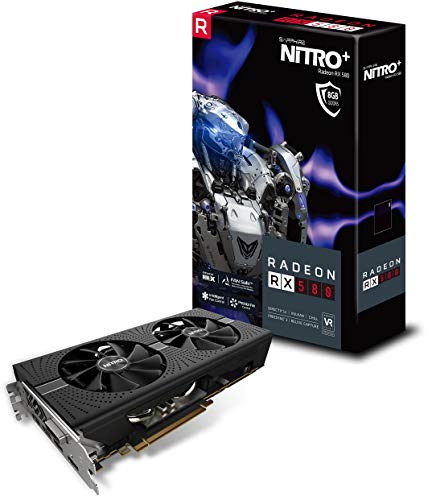 | Sapphire Nitro+ Radeon RX 580 | Best Overall RX 580 | Check Price |
| 2 | 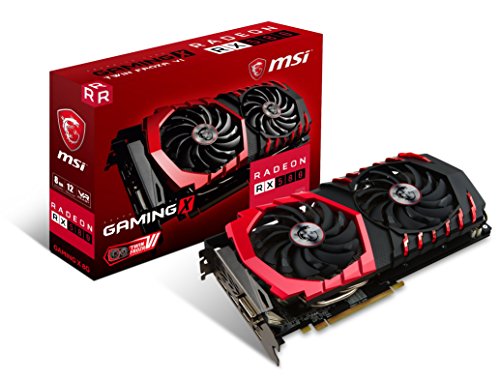 | MSI Gaming X Radeon RX 580 | Best Looking RX 580 | Check Price |
| 3 | 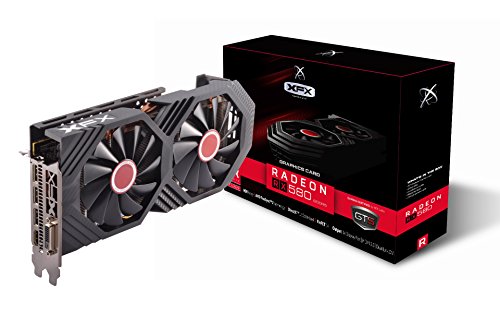 | XFX Radeon RX 580 GTS XXX | Best Value RX 580 | Check Price |
| 4 | 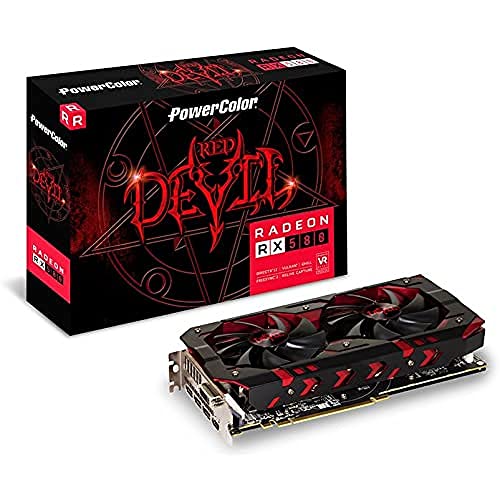 | PowerColor Red Devil Radeon RX 580 | Best Overclocking RX 580 | Check Price |
| 5 | 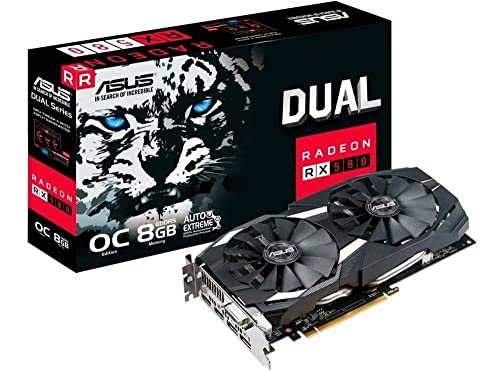 | ASUS AREZ Dual Radeon RX 580 | Best Alternate RX 580 | Check Price |
| # | 1 |
| Preview |  |
| Product Name | Sapphire Nitro+ Radeon RX 580 |
| Description | Best Overall RX 580 |
| Availability | Check Price |
| # | 2 |
| Preview |  |
| Product Name | MSI Gaming X Radeon RX 580 |
| Description | Best Looking RX 580 |
| Availability | Check Price |
| # | 3 |
| Preview |  |
| Product Name | XFX Radeon RX 580 GTS XXX |
| Description | Best Value RX 580 |
| Availability | Check Price |
| # | 4 |
| Preview |  |
| Product Name | PowerColor Red Devil Radeon RX 580 |
| Description | Best Overclocking RX 580 |
| Availability | Check Price |
| # | 5 |
| Preview |  |
| Product Name | ASUS AREZ Dual Radeon RX 580 |
| Description | Best Alternate RX 580 |
| Availability | Check Price |
Last Update on 2025-05-12 at 11:10 / Affiliate links / Images from Amazon Product Advertising API
Don’t let the age of the RX 580 fool you, it is still one of the very best budget graphics cards. However, being a card from a few years ago, some consideration should be given to the overall buying decision before pulling the trigger on this purchase in today’s market. While the GPU shortage is rampant and there seems to be relief in sight, for the time being, people are turning to older cards like the RX 580 for temporary use. The RX 580 variants on the market range from some of the very best cards of the era, to absolutely shambolic offerings that should be avoided. Keeping that in mind, here are the 5 best AMD RX 580 variants that should be on the priority list for any potential buyers.
1. Best RX 580 For Gaming - Sapphire Nitro+ Radeon RX 580
Top Of The Line
Pros
- Amazing Thermal Performance
- Quiet Operation
- Attractive Design
- Tasteful RGB Lighting
- High Boost Clocks
Cons
- Quite Expensive
- High TDP
Stream Processors: 2304 | Base/Boost Clocks: 1257/1411 MHz | Memory: 4GB/8GB GDDR5 | Memory Bandwidth: 8 Gbps | Power Connectors: 1x PCIe 8-pin, 1x PCie 6-pin | Outputs: 1x DVI, 2x HDMI, 2x DisplayPort
Sapphire is one of the top partners of AMD and they have been producing some of the best exclusive AIB cards for them for a long time. The Sapphire Nitro+ Radeon RX 580 is another offering from Sapphire that checks all the boxes really well and is, therefore, one of the best aftermarket variants of the RX 580.
Under the fan shroud, Sapphire has included a rather hefty heatsink with a unique trick that maximizes the thermal performance of the card. The fins of the heatsink are arranged along the length of the card rather than the width, which improves the efficacy of the heatsink by a big margin. The air moving through the heatsink makes more contact with the metal, and thus dissipates more heat than competing designs such as Vapor Chamber or Blower Style coolers. The two fans are also incredibly quiet, and they only ramp up very slightly under load which is another testament to the excellent thermal management of Sapphire’s design. This is quite simply the best RX 580 variant as far as temperatures and noise are concerned.

Aesthetically, the RX 580 Nitro+ is quite understated and plain if you look at the fan shroud, but the backplate bears a stylish design that is more in tune with the gaming theme. The Nitro+ RX 580 certainly looks premium and well-built, however, and the RGB lighting on the side is just an added bonus. Unlike other manufacturers, Sapphire did not go completely overboard with the lighting and limited it to the Sapphire logo, which is quite tasteful.
Overall, the Nitro+ RX 580 is certainly one of the best variants of the RX 580 you can buy. It delivers excellent performance in both thermal and acoustic categories, and it has a sizeable factory overclock as well which is a cherry on top. The only downside might be its price, which is a bit more than the competition but can certainly be worth it in the long run. We have a complete guide on Overclocking SAPPHIRE RX 580, so make sure to check it out.
2. Best Looking RX 580 - MSI Gaming X Radeon RX 580
Premium MSI Offering
Pros
- Efficient Heatsink Design
- Low Noise Levels
- High Power Budget
- Aggressive Design Language
- Solid Overclocking Headroom
Cons
- Design Might Not Suit Most Builds
- Pricy Variant
Stream Processors: 2304 | Base/Boost Clocks: 1257/1393 MHz | Memory: 4GB/8GB GDDR5 | Memory Bandwidth: 8 Gbps | Power Connectors: 1x PCIe 8-pin | Outputs: 1x DVI, 2x HDMI, 2x DisplayPort
Another excellent option comes from MSI with the MSI Gaming X Radeon RX 580. The Gaming X was MSI’s premium offering in the RX 500 series, with the MSI Armor being the basic, barebones option that was quite ill-received by the enthusiasts. The Gaming X, however, was quite popular due to its incredible performance.
Thermals were well-managed due to a large heatsink with copper heatpipes that aided in the dissipation of heat by spreading it through the fin array. MSI used their Twin Frozr VI technology in this generation, which meant that two of MSI’s Torx fans were added to the card for cooling purposes. The Torx fans are very well-built, high-quality fans that provide plenty of airflow while staying quiet even at higher loads. The well-managed thermals and high power budget also made it an excellent overclocker which should be beneficial for overclocking enthusiasts. Our handy GPU overclocking guide can also prove helpful in this process.

As far as looks go, the MSI Gaming X RX 580 is certainly not a bad-looking card. However, it leans a bit too heavily into the “gamer-y” aesthetic that was quite popular back when this card was being designed. MSI has since done away with colored accents in their cards, but that was not the case with the Gaming X RX 580. If your particular build theme does not include the red color, the Gaming X might look a bit out of place, and that is a disappointment. There is no lighting on the fan shroud either, but that was a rare sight in the days of the RX 500 series.
All in all, the MSI Gaming X Radeon RX 580 was, and still is, a great high-end option from MSI for the RX 580. If you are in the market for one of the best RX 580 graphics cards, and looks don’t really matter to you, then this might just be the perfect card for you.
3. Best Value RX 580 - XFX Radeon RX 580 GTS XXX
A More Reasonable Choice
Pros
- Decent Thermal Performance
- Impressive Acoustics
- Affordable
- Relatively Low TDP
Cons
- Controversial Aesthetics
- No Lighting
- Unremarkable Boost Clocks
Stream Processors: 2304 | Base/Boost Clocks: 1257/1366 MHz | Memory: 4GB/8GB GDDR5 | Memory Bandwidth: 8 Gbps | Power Connectors: 1x PCIe 8-pin | Outputs: 1x DVI, 1x HDMI, 3x DisplayPort
XFX has been the exclusive partner of AMD for a long time and they have come out with some really good variants in the last few years. The XFX Radeon RX 580 GTS XXX might have a terrible name, but it is certainly a strong mid-range offering that covers all the bases really well and should be considered by potential buyers.
Other AMD Graphics Cards Guide: 5 Best AMD RX 6800 Graphics Cards
As far as thermals go, the XFX RX 580 GTS XXX certainly delivers more than acceptable performance in this area. While it won’t be topping any charts any time soon, the heatsink design and the heat dissipation capabilities of the card are certainly enough for the RX 580’s GPU. The fans are reasonably quiet as well under low-to-moderate loads, but they do ramp up a bit when the GPU is under heavy load which is to be expected. Fan behaviour can, of course, be altered to match the user’s preference for noise levels and temperatures. Our helpful guide for altering GPU fan behavior can be found here. Overall, both the thermal performance and noise levels of the card are satisfactory.

In terms of aesthetics, the Radeon RX 580 GTS XXX from XFX does stand out from the crowd but in a negative way. The design of the card is odd, with unusual cuts and angles that are not otherwise found in most graphics cards. There is no lighting anywhere on the card, which is another downside. Safe to say that you won’t be buying this card for the looks if you choose to go with this particular variant.
Keeping the looks to one side, the XFX Radeon RX 580 GTS XXX is a pretty well-rounded package. It is also generally cheaper than both the Nitro+ and the Gaming X variants, which makes it a really good value. If looks are not important to you, then this variant might be a completely reasonable choice.
4. Best Overclocking RX 580 - PowerColor Red Devil Radeon RX 580
A Decent Alternative
Pros
- Excellent Cooling Performance
- Relatively High Overclocking Headroom
- Quiet Fans
- High Factory OC
Cons
- Relatively High Price
- Unremarkable Aesthetics
- High Power Draw
Stream Processors: 2304 | Base/Boost Clocks: 1257/1380 MHz | Memory: 4GB/8GB GDDR5 | Memory Bandwidth: 8 Gbps | Power Connectors: 1x PCIe 8-pin, 1x PCie 6-pin | Outputs: 1x DVI, 1x HDMI, 3x DisplayPort
Another exclusive partner of AMD that regularly releases excellent AIB variants of their cards is PowerColor, and they certainly did the same for the RX 580. The Red Devil branding is used by PowerColor for their most premium variants, and the Red Devil RX 580 certainly belongs to that class.
In terms of thermal performance, the Red Devil certainly does not disappoint. It is actually one of the more premium cooling solutions just like the Nitro+ and the MSI Gaming X. This allows PowerColor to set the boost clocks of the Red Devil at 1380 MHz which is quite high for even the best RX 580 graphics cards. The acoustic performance of the card is also quite impressive due to the fact that the two fans operate very quietly when under low-to-moderate loads. It does get a bit noisy under full load but that is completely normal behavior.

The PowerColor Red Devil RX 580 falls behind the other options when it comes to aesthetics. Not only is the card fairly busy-looking and unattractive, but it also has prominent red accents which will clash with the majority of PC builds. Lighting is also absent from the card, but that is fairly common for RX 580 variants. This card could have been higher up on the list if PowerColor had opted for a more neutral aesthetic without the fixed red accents.
The Red Devil is also relatively more expensive than its competitors which makes it a tough buy considering the fact that the Nitro+ and Gaming X variants are also available for similar prices. The card itself is an excellent performer, but it is let down slightly due to its controversial aesthetics and pricing.
5. Best Alternate RX 580 - ASUS AREZ Dual Radeon RX 580
Budget Pick
Pros
- Adequate Thermal Performance
- Budget Oriented
- Only One 8-pin Required
Cons
- Relatively Noisy Fans
- Low Overclocking Headroom
- Lack of Backplate
- Unremarkable Clocks Speeds
Stream Processors: 2304 | Base/Boost Clocks: 1257/1360 MHz | Memory: 4GB/8GB GDDR5 | Memory Bandwidth: 8 Gbps | Power Connectors: 1x PCIe 8-pin | Outputs: 1x DVI, 2x HDMI, 2x DisplayPort
While the ASUS Strix Radeon RX 580 is definitely the premium offering from ASUS for the RX 580, it certainly does not make any sense to buy that variant for a budget GPU such as the RX 580 considering its exorbitant pricing. Our pick is the ASUS AREZ Dual Radeon RX 580 which is a budget-oriented variant of the RX 580 from ASUS.
The ASUS Dual RX 580 certainly does not hold a candle to the other variants on this list when it comes to thermal performance, but it is adequate for the RX 580 at stock settings. One should avoid manual overclocking with this card because the cooling solution might be overpowered if you increase the power draw of the card. The fans do have a tendency to become noisy at moderate-to-high loads, but that can be tuned by using custom fan curves.

As far as looks go, the ASUS AREZ Dual Radeon RX 580 is plain and quite inoffensive. It does not have a particular design language that sets it apart from the other variants on the market. There is no lighting on the card either, which is to be expected. ASUS has also omitted the backplate from this variant as a cost-saving measure, which is a big letdown. Exposed PCB backs look quite cheap and unattractive in today’s landscape, especially inside expensive gaming PCs. Coincidentally, its affordable nature and plain looks make it an ideal variant for crypto-miners who are not that interested in aesthetics.
While it may not be the best RX 580 variant on the market, the ASUS AREZ Dual Radeon RX 580 does certainly have its place. This is a card that is aimed at or near MSRP pricing for the RX 580, and therefore offers an extremely good value proposition. If you are looking to maximize your bang-for-the-buck, then this value pick might just be the perfect one for you.
Factors To Consider While Buying RX 580
Purchasing the best RX 580 graphics card might seem pretty straightforward, but buying the RX 580 variant that perfectly complements your particular build is a whole different ordeal. Generally, as with any other purchase, some factors do have to be considered in the buying decision for a graphics card, and the RX 580 is no exception. Following are some of the things that you should definitely keep in mind when purchasing a graphics card.
Thermal Management
When we talk about the thermal management of a graphics card, the overall premise is really straightforward. The heatsink assembly of the card has to be able to dissipate the heat that is being produced by the GPU and the associated components such as memory modules and VRM components, etc. A graphics card that is unable to cope with the amount of heat being produced will ultimately overheat and that will lead to severe thermal throttling in modern GPUs, a process that can hamper performance quite significantly. Therefore, it is crucial to identify the different types of cooling solutions implemented in the numerous variants that are available on the market for each card, and research their pros and cons in terms of performance.
Acoustic Performance
Equally as important as the cooling performance of a card is its acoustic performance, which simply refers to the amount of noise a card produces at a particular load level. It is understandable that lower noise is the desired outcome in this category, and many graphics card variants on the market fail to do so quite spectacularly. Achieving lower noise levels while keeping temperatures in a comfortable range is the perfect blend of performance and acoustics that one should look for when making a purchase decision for a graphics card. Understandably, this does mean that the price of the variant will increase as you move towards options with low noise levels and low temperatures.
Furthermore, understanding the TGP, TBP, and TDP of your card is important, but not quite as important as the thermal and acoustic performance that you desire from your card after purchase. Therefore, it is considered ideal practice by the enthusiast community to research thoroughly about the various graphics card variants that are available for purchase from the numerous AIB board partners. Making an informed purchase decision will only be possible if the potential buyer is fully aware of all the potential pitfalls that might befall them during this process.
 Check Price
Check Price



